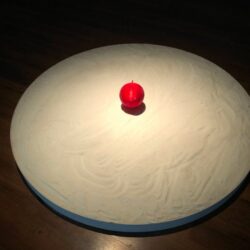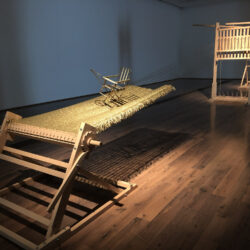“What art is neither can be grasped nor can be determined ? one can only feel it.“
J. T.
József Tasnádi’s art focuses on associations and visually generated stories; he creates imagetexts. His installations, interventions, and generative digital experiments are visual essays. Visual essays that are rewritten into stories, textual narratives, in which rich, lush, free fields of interpretation and associations unfold.
According to art historian Gábor Andrási, Tasnádi’s artworks are disquieting objects. This disquiet, on the one hand, is evoked by the undecidability arising from openness, the common, hardly separable presence of imagination and reality, “the physical existence of the building as an experience of evidence, and the seemingly surrealistic or nonsensical artwork, as an enigmatic phenomenon waiting to be interpreted”. On the other hand is the determining, revelatory spatial interference, the intervention, the confusing emergence, the unexpected entrance of the artwork.
Tasnádi seeks his inspiration not inside, but outside of art. He finds things. Things that spontaneously connect themselves with meta contents, such as hope, memory, death, the impossibility of communication, time, presence, or the lack of it. In connection with these determining issues, he also examines the relations of technology and art. He experimented with the immaterial references of art, the methods of medial rewriting and visualization, then his attention turned towards multimedia installations and new media.
In recent years his art has been focusing on the connections within the relationship of man and machine, technology, metaphoric perspective and poetic thinking. He thematises important questions with hybrid contemporary artistic methods in which (scientific) research, (artistic) elaboration/reflection and the demand for poetic synthesis are strongly connected.
Szabolcs Süli-Zakar


